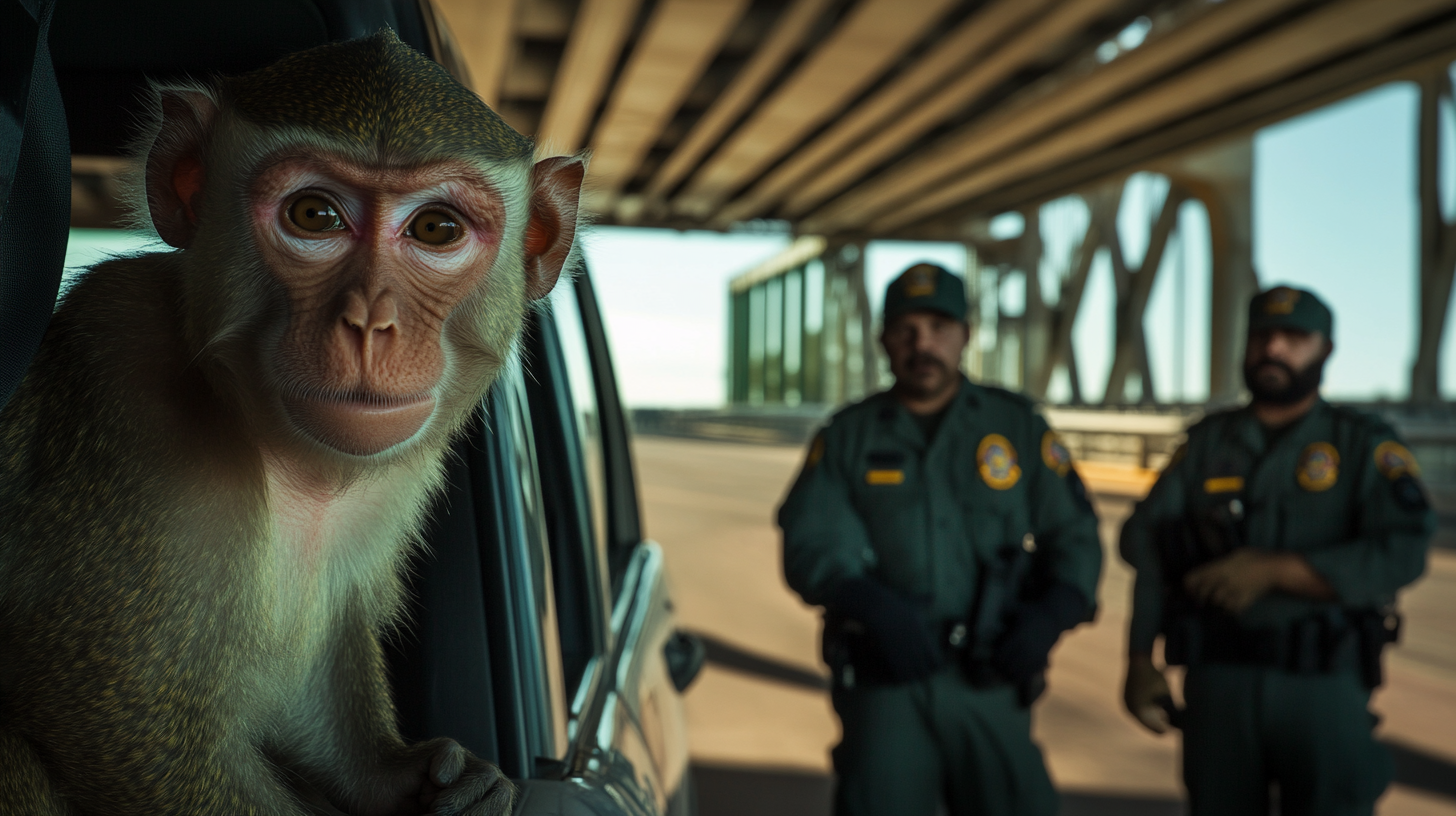Three Live Monkeys Intercepted at Border by Officials
BROWNSVILLE, Texas – In a surprising and unusual discovery, U.S. Customs and Border Protection (CBP) officers at the Brownsville and Matamoros International Bridge intercepted three live monkeys during a routine vehicle inspection on December 22, 2024. The incident unfolds a story that combines wildlife protection, border security, and potential legal implications—all intersecting in the context of Rio Grande Valley (RGV) news.
Incident Unveiled During Routine Inspection
The startling discovery took place when a 48-year-old U.S. citizen attempted to cross into the United States in a 2020 Mitsubishi. What started as a routine inspection quickly escalated when CBP officers decided to conduct a secondary review. It was during this thorough inspection that they uncovered the live animals hidden within the vehicle.
“Our CBP officers remain vigilant as they perform their duties to keep our borders secure, and their diligence led them to the discovery of three live monkeys,” remarked Tater Ortiz, the Port Director at the Brownsville Port of Entry. “We remain committed to preventing the exploitation of protected animals and the spread of animal diseases.”
Action Taken and Legal Proceedings
Following the surprising find, the driver was promptly arrested, and the Mitsubishi vehicle was seized by the authorities. Homeland Security Investigations (HSI) has taken the lead in conducting a criminal investigation to delve deeper into this matter.
Meanwhile, the three monkeys have been handed over to U.S. Fish and Wildlife officials for proper care. They are currently housed at the Gladys Porter Zoo in Brownsville, Texas, where they are being observed and looked after by experts in animal care.
Impact on the Rio Grande Valley Community
For the Rio Grande Valley community, this incident underscores significant issues related to wildlife trafficking and border security—topics that resonate deeply in a region known for its rich biodiversity and border dynamics. The interception highlights the ongoing vigilance required to safeguard both local wildlife and public health.
Jose Rodriguez, a local environmentalist and community advocate, expressed his concerns regarding the incident, “The smuggling of wildlife is a grave threat, not just to the animals involved but also to our ecosystems. It’s crucial that we remain watchful and support efforts to curb these activities.”
Connections to Previous Local Events
This incident is reminiscent of other cases where animals were found being smuggled across the border, highlighting an ongoing issue Taylor made of illegal wildlife trafficking. A notable instance occurred in 2022 when CBP officers at a different Rio Grande Valley port intercepted a shipment of rare reptiles. The recurrence of such cases indicates a persistent challenge that border officials continue to tackle.
Potential Future Implications
The legal proceedings and investigations following this discovery could set precedents for how similar cases will be handled in the future, influencing policies at both local and national levels. For Valley residents and South Texas at large, it could mean more stringent border inspections and potentially new measures to address wildlife trafficking.
For policymakers like Commissioner Laura Villanueva, this event could serve as a catalyst for reviewing animal transport regulations. “It’s imperative that we revise and enforce regulations to prevent not only smuggling but also to address public safety concerns. This incident serves as a wake-up call for stronger surveillance and legal frameworks,” she said.
Balancing Perspectives
While the interception was successful in preventing the exotic animals from being illegally brought into the United States, it raises questions about the broader implications for vehicle inspections and what it might mean for regular border crossers. There’s a balance to maintain between effective border control and the expedience of legal travel.
Ernesto Chavez, a frequent traveler between Texas and Mexico, voiced his thoughts, “While it’s important to catch illegal activities, longer inspection times could impact daily commuters and trade. It’s about finding the right balance.”
Community Outreach and Resources
To address community concerns and provide more information, CBP plans to host informational sessions in the region. Residents will have the opportunity to learn more about border security measures and how they can contribute to curbing illegal wildlife trafficking.
Community members seeking more information or who wish to report related activities can contact the local CBP office at the Brownsville Port of Entry. Additionally, resources from U.S. Fish and Wildlife on animal welfare and reporting are readily available online.
As the Rio Grande Valley continues to navigate these complex issues of wildlife protection and border security, stories like these reflect the community’s resilience and proactive stance on preserving local interests while upholding safety and legal standards.







